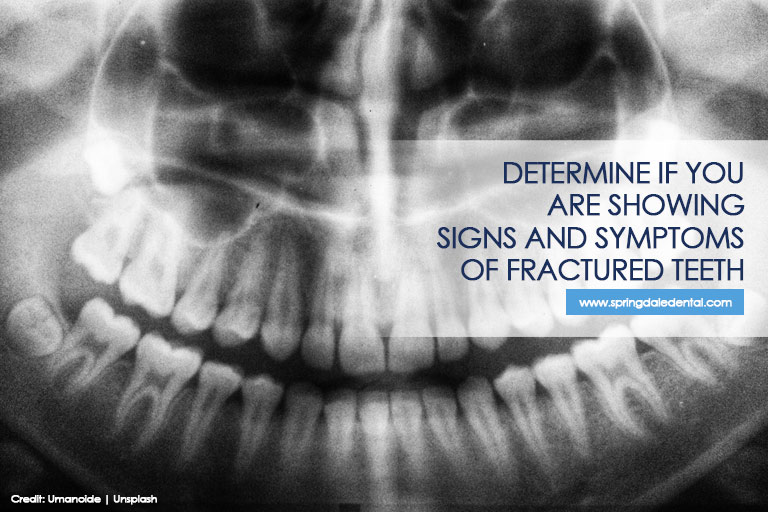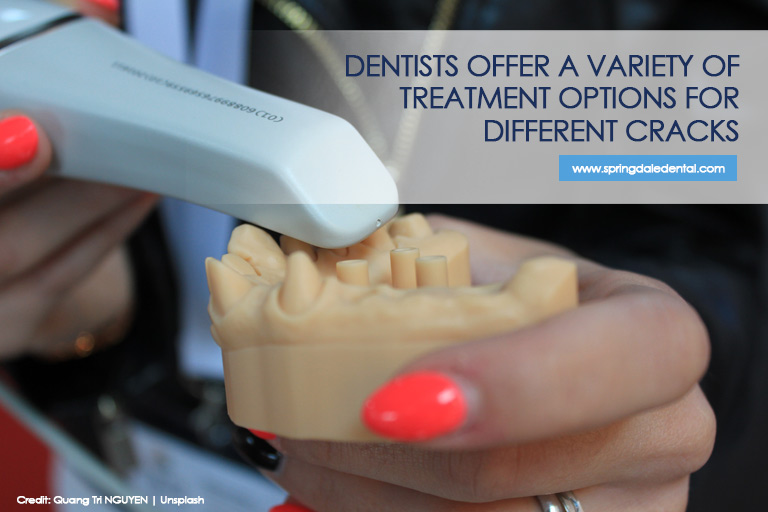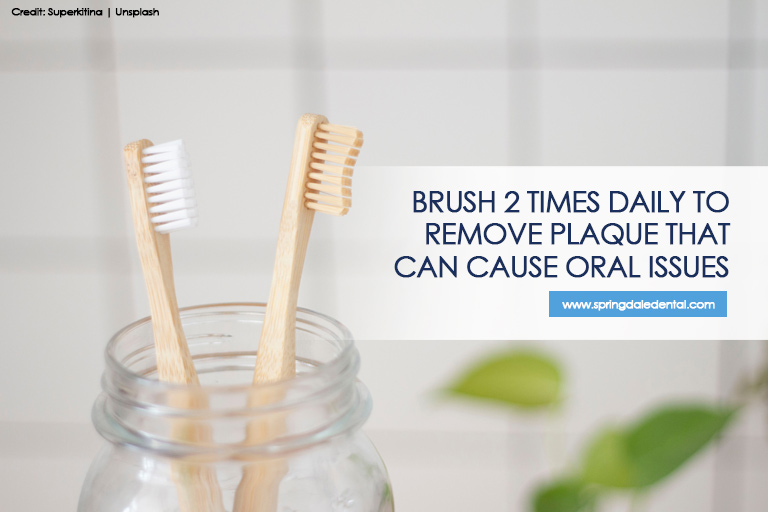Tooth fractures can be small or large. Small ones do not always cause pain and can be imperceptible. You may only notice them when you feel the sharp edges with your tongue. However, while this is true for small tooth cracks, large ones can be painful and may come with nerve damage. If you feel intense discomfort when you chew, your nerve endings may have been exposed.
If you suspect that you may have fractured a tooth, see your dentist immediately. Early detection and management will help you improve your tooth’s survival and condition. Here’s an in-depth look at this dental emergency so you can deal with it.
How Do I Know if My Tooth Is Fractured?

Most dental chips are a result of oral injuries. Both the signs and symptoms of a tooth fracture vary and can be difficult to determine. Symptoms can include feeling pain when chomping down on food, tooth sensitivity when eating sweets or cold drinks, and swelling around the gum where the affected tooth is. If you notice these symptoms but are showing no signs of tooth decay, you may have a tooth fracture.
Below are tooth fracture types and their symptoms:
- Cracked cusp – This is a type of tooth crack that often happens around a dental filling. It may not affect the tooth’s pulp and may not cause intense pain. However, you still need to see a dentist in case the filling has been damaged.
- Rift tooth – This refers to a crack in the tooth that goes from the surface down to the line of your gum, inherently breaking the tooth in two. A tooth with this type of crack can be difficult to save in its entirety, but a dentist can save a part of it.
- Vertical root fracture – This type of tooth fracture classification starts below the gum line and extends upward. Symptoms do not often appear unless the tooth is infected. This type of fracture may require extraction.
- Craze lines – Craze lines are tiny cracks that form on the tooth’s enamel. They don’t typically cause pain or discomfort or need treatment.
- Extensive tooth fracture – This type of fracture has either reached the gum line or is about to. A dentist can save an extensively cracked tooth so long as the damage has not reached the gum line yet. Otherwise, your dentist will need to extract the tooth. Early detection and treatment is key to saving a tooth with this type of crack.
What Causes a Fractured Tooth?
There are multiple reasons why your teeth may crack, including:
- A large tooth filling, which can weaken the tooth’s integrity
- Age, tooth cracks often occur in people at the age of 50 or beyond
- Impact to the mouth during a fall, fistfight, sporting injury, or car accident
- Teeth grinding, which creates pressure
- Biting into hard foods (e.g. candies, nuts, and ice)
- Sudden temperature changes in the mouth (e.g. eating something hot then trying to drink cold water with ice)
What Are the Signs and Symptoms of a Fractured Tooth?

The following are the most common tooth fracture symptoms. However, take note that these are not always present if you have a tooth crack.
- Sensitivity to sweet, hot, or cold food or drink
- Pain when biting or chewing
- Gum swelling around the affected tooth area
- Intermittent or recurring pain
What Are the Complications of a Tooth Fracture?
Complications occur at the onset of an infection. Left unchecked, the infection can spread to the gums and bones. Some common signs and symptoms of tooth infection or tooth abscess are:
- Swollen gums
- Bad breath
- Fever
- Tenderness in the glands in the neck
- Cold and heat sensitivity
- Pain and discomfort when eating
The dentist will prescribe you an antibiotic after draining the pus from the infection.
How Is a Tooth Fracture Diagnosed?
Diagnosis for teeth fracture is not always simple. If there are no visible cracks, your dentist performs the diagnosis by first asking you questions to narrow down the problem. Using a magnifying glass, your dentist will then examine your teeth to check for cracks. The dentist will also use a dental explorer — a pointed instrument that catches cracked or rough edges on the surface of teeth.
Using a dental dye can also make fractures more apparent. A tooth X-ray is necessary to reveal if there are issues in the tooth pulp. An unhealthy pulp may indicate a fracture.
How Can a Fractured Tooth Be Treated?

Treatments vary depending on the severity of the damage. Your dentist will recommend the best treatment for you.
- Veneers – If you have a fair amount of remaining teeth, veneers are ideal. These are also durable and more conservative in terms of dental restoration.
- Crowns – Dentists will opt for crowns if veneers are not deemed suitable for your teeth. A crown mimics the natural appearance of teeth and completely covers what is left of the affected tooth. In case the tooth nerve is damaged and infected, your dentist will perform a root canal first. The root is thoroughly cleaned and filled to avoid more infection.
- Dental bonding – A dentist applies a composite resin to fill the crack of your tooth. It restores the shape of your tooth as well. Dental bonding can repair a small tooth crack easily.
- Cosmetic contouring – If the crack is small, dentists often turn to this procedure. The rough edges of the affected tooth are polished and rounded to eliminate the crack.
When Do I Seek Dental Help?

If you suspect that you may have a tooth fracture, seek dental assistance right away, especially when you are having pain and discomfort. If your cracked tooth is left untreated for so long, it will be more difficult for your dentist to treat and complications, like infection, can occur.
While you wait for your dental appointment, use the following home remedies to provide temporary relief:
- Apply a cold compress on your cheek to help the swelling subside.
- Take over-the-counter painkillers.
- Gargle using warm water to fight the bacteria and reduce infection.
What Are the Steps for Prevention and Maintenance?

While tooth cracks and possible complications cannot be treated at home, you can definitely prevent them. It is less likely for strong teeth to crack, that is why proper dental hygiene is important. Brush twice a day and visit your dentist every 6 months so you can keep your teeth strong and free of cracks.
Also, take note of the following:
- Avoid biting on hard food.
- When playing contact sports, always wear a mouthguard.
- If you grind your teeth while you sleep, inform your dentist. They can recommend a mouthguard or retainer to protect your teeth.
A tooth fracture can turn into a serious problem that can lead to tooth loss. Seek the assistance of a dental professional as soon as you suspect a crack or if you were involved in an incident resulting in a mouth injury.
If you are looking for a dentist in Brampton, turn to Springdale Dental Centre. We provide a wide range of comprehensive dental care services from general dentistry to cosmetic dentistry. Our trusted team creates individualized treatment plans to address your concerns. Do not hesitate to reach us. Call us at (905) 458-1212 or book an appointment.



